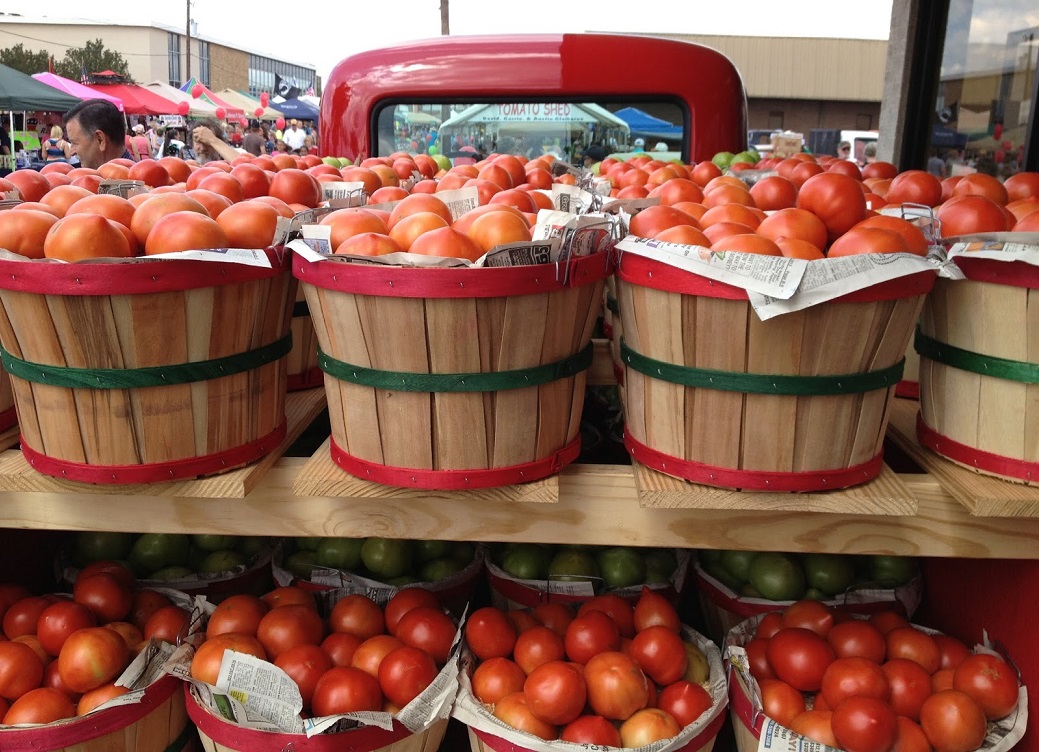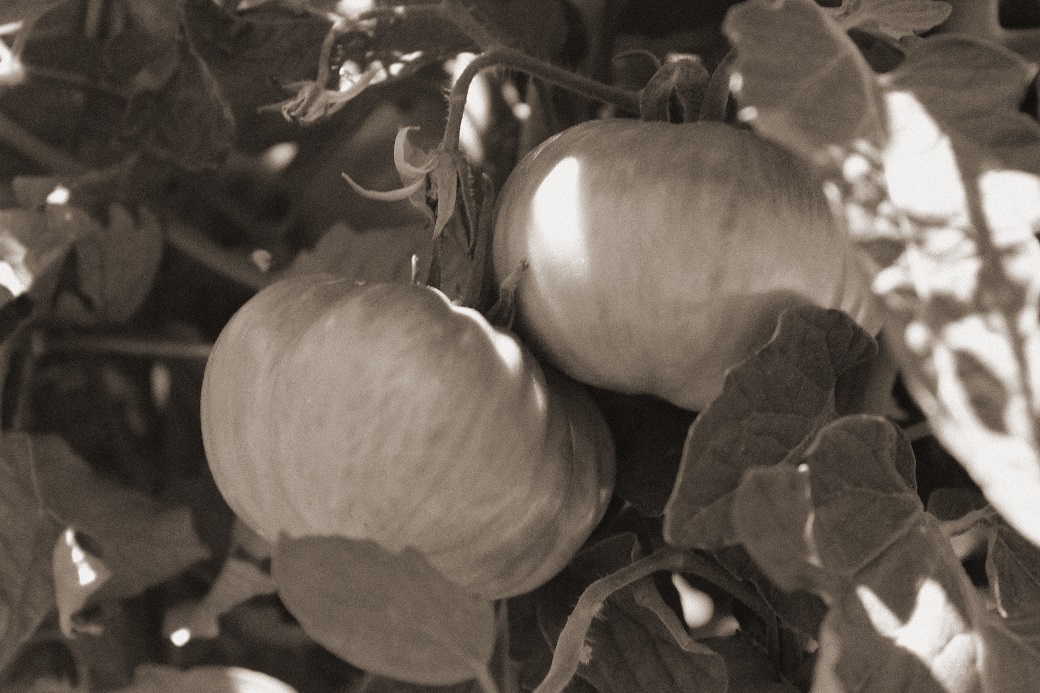Why did the tomato blush? Because he saw the salad dressing.
Regardless of your particular take on the severity of upcoming food inflation, availability of certain food, importance of organic and/or non GMO varieties, the cost of ingredients at your favorite restaurant, or unpredictable weather for growing seasons, there is little chance that the future of tomatoes will not affect you.
As a lifelong practitioner of the school of fake cooking, aside from a few special recipes, I never cooked from scratch until now. That would have required buying specific individual ingredients, correctly following the instructions from someone else’s recipe and then taking the time to construct the final product. In an ADHD world of instant gratification and readymade meals, it has always been beyond temptation to settle for the easy road.
Since moving to the mountain last summer, I have embarked upon an adventure to not only learn the basics of those long avoided culinary skills, but to produce as many of the ingredients by my own hand as is possible. Those of us with brown thumbs understand this can indeed appear to be rocket science. But it is becoming quite clear to me that this process involves tomatoes.
In 2010 the USA produced 2.89 billion pounds of tomatoes just for 'fresh market' sale, two thirds of which are grown in California (now in a prolonged severe drought) and Florida. Fresh market tomatoes are those found in the produce section of grocery stores that are used for salads and on sandwiches. This does not account for the 'processed' tomato industry. Approximately three quarters of the tomatoes consumed by Americans are in its processed form. In short, in order for our diets to continue in some fashion of 'normalcy', we are going to need tomatoes.
The pizza industry alone has accounted for a large 30% increase in the use of processed tomato products over the past several decades, but in addition we use processed tomato products in salsa, juices, canned diced, stewed, pasta sauces, soups, chili, ketchup, bbq sauces and many more items. As 94% of the processed tomato items consumed in the U.S. are produced domestically and therefor priced in U.S. dollars, we’re going to need a better tomato connection.
What did the pasta say to the tomato? “Don’t get saucy with me!”
Deciding the solution for our family was to grow and produce our own tomatoes, I have discovered information that is helpful, informative and even shocking. For instance, most people have heard that a tomato is not a vegetable, it’s a fruit. Do you know why there is confusion? It seems that tomatoes were originally correctly classified as a fruit as they are the ovary of the plant. In 1893, the U.S. Supreme Court ruled (Nix vs. Hedden) that the tomato was a vegetable so it could be included in tariffs.
The next surprise I had was to learn that contrary to what most people are taught, the tomato is a tropical perennial. Originating in South America and migrating over the years to be grown in Mexico and finally the U.S., in their original warm and moist climates these plants live year round for many years. It is only in the varying climates in the Northern hemisphere where they must be treated as annuals and started anew each spring. This tells me much about what the plant expects as we work our magic to trick it into producing in a much shorter period during a brief life.
How do you fix a sliced tomato? Use tomato paste.
There are two basic types of tomatoes. Determinate varieties only grow to about three feet high and are bushy. Each stem produces about three flowers each and then stops growing. They can be grown in smaller spaces, require no pruning and are great for canning. This means all the tomatoes will be available for about two weeks and then that particular plant is done for the season. Some varieties have short seasons of 45 to 60 days until ripe and others have a longer season of 65-90 days.
Indeterminate varieties grow indefinitely, from 6 to 20 feet tall. They continue to grow and produce tomatoes until frost, nutrient deficiency or disease stops them. Because of this pronounced growth, indeterminate tomatoes often need to be pruned and staked for robust continued production. Most heirloom varieties are indeterminate, but not all of them.
For growing tomatoes in containers, the size of determinate tomato varieties appear to be most practical. But remembering that indeterminates have continual production, I am about to embark upon growing indeterminates indoors both in sunny windows and with the help of bright focused lights, to see if I can “trick” them into producing throughout the winter. I will be attempting this with upside-down planters and the vines will need to be kept pruned regularly.
Here is the most comprehensive list I have found to check for the duration of both determinate and indeterminate varieties, whether or not they are hybrid or heirloom, and what the best uses for each are.
How do you get rid of unproductive tomatoes? You can them.
I am finding that growing tomatoes isn’t too difficult as long as nothing catches me by surprise. The first rule is to pay attention to them. Anyone serious about regular production, processing and preservation should consider spending time on garden websites and looking through agricultural information online from various universities. Here is the quick down and dirty on what I have learned.
Tomatoes require a soil temperature of 60° F to grow. They will cease to grow and produce if exposed to frost. In the Northern hemisphere, tomatoes generally prefer full sun, but not scorching. If you live in a southernmost location, partial shade may be preferable.
Because tomatoes are actually tropical perennials, it is preferable to start your seedlings indoors about 6-8 weeks before the last frost. This will give them enough time to get a head start on the shortened season. Make sure the plants spend several days outdoors before transplanting them into the garden or final growing destination. This will allow them to become accustomed to cooler air before the roots are shocked upon planting. When transplanting, lower the stems further into the soil than the seedling was. The tomato stems will grow roots from the bit of the stem buried helping the plant develop heartiness.
Because our compost/fertilizer system is not up and running yet suitably for garden use, I ordered organic “Tomato Tone” fertilizer which has an NPK (Nitrogen/(Phosphorus)Potash/Potassium) of 3-4-6 rather than the more common 10-10-10 or 10-20-10 which is overkill for tomatoes. Anyone who is following my tomato insanity knows I now have more than 2,000 tomatoes of various types growing faster and stronger than I ever anticipated. I think it’s safe to say I endorse this plant food lol.
Why shouldn't tomatoes tell secrets on a farm? Because the potatoes have eyes and the corn has ears.
As far as treating for pests and disease, I have been experimenting. The local expert gardener has informed me I must use certain chemicals on my veggies at our high moist altitude. These are Sevin for insects and Daconil for fungus. My goal is to not use these products if I can find alternatives. Last summer, my limited quantity of tomatoes were crawling with aphids and then died suddenly, within a week, of blight. I had not treated them with anything.
This year, I had read that turning the hose directly on the leaves of the plants will spray the aphids and white flies off the plants so they will not have time to take up residence and successfully lay eggs. So every morning except the rainy ones, I get up early and go “wash” my tomato plants. All 107 of them. Up and down, all sides and underneath. I talk to them while I do this. Boy, they are happy plants.
Then, “early blight” set in last week. The top link in the list of references at the end of this article is the Texas A&M horticulture problem solver for tomato issues. I don’t always follow their solutions, but they do a great job helping me to diagnose any tomato issue. I was thrilled to discover today that tomatoes, like humans, grow unwanted bacteria and fungus when they are in an acidic state. As I have written about (for humans) in so many of my health articles, we simply need to bring the tomato plants into a more alkaline state and the blight (a fungus) will die.
The organic solution for alkalizing my tomatoes is to mix 2 Tablespoons of baking soda (which is very alkaline) and 2 Tablespoons of organic vegetable oil (which will help it to stick to the plant) for every one gallon of water in your sprayer. This solution can be applied to all parts of the plant as often as necessary, even daily, to help restore the plant.
Why did the tomato go out with a prune? Because he couldn’t find a date.
Another bit of tomato trivia that I was thrilled to run across was regarding coffee grounds. Tomatoes love nitrogen (the N in NPK fertilizers). Coffee grounds have an NPK of 2-1-1 but tend to make the soil a bit acidic. I erred on the side of caution when I read about a chef who unceremoniously dumped all of his grounds in his tomato patch, so I did an experiment. I started using about three tablespoons of grounds per plant weekly in addition to the organic fertilizer and those plants are growing enormous. I have not been able to put the latest growth from them into the giant tomato cages because there is no more room. Some of the main stems on these plants are almost an inch thick. Perhaps it is because I talk to them as I wash them each morning, but the coffee grounds are going into my successful category for now.
Why did the tomato fungus have to pay double bus fare? Because he took up too mushroom.
Finally, I cannot finish without briefly touching upon the incredible health benefits of tomatoes. Proven to have numerous anti-cancer properties from lycopene and beta-carotene content, tomatoes are high in Vitamin K which plays a big roll in clotting and bone health. Clinical studies have repeatedly shown tomatoes can lower bad cholesterol, help prevent heart disease and effectively combat eye diseases such as macular degeneration and cataracts. I restate my claim that good food really is the best medicine.
If you are not in a location to be able to garden, I suggest you find more than one local source of fresh produce, perhaps to buy in bulk and preserve tomatoes and other vegetables yourself. Here is a website which will help you to locate those sellers nearest to you. http://eatlocalgrown.com/ In addition, at least 19 states hold tomato festivals. Find a tomato festival near you. http://www.pickyourown.org/TomatoFestivals.htm
Why did Mrs. Tomato turn red? She saw Mr. Green Pea over the back fence.
More links:
Another homemade tomato fertilizer (I have not tried): http://www.examiner.com/article/a-simple-homemade-tomato-fertilizer
To find the NPK value of many natural substances: http://www.lundproduce.com/N-P-K-Value-of-Everything.html
Sources:
http://aggie-horticulture.tamu.edu/vegetable/problem-solvers/tomato-problem-solver/
http://www.organicgardening.com/learn-and-grow/tomatoes-a-growing-guide
http://www.agmrc.org/commodities__products/vegetables/fresh-tomatoes-profile/
http://www.ers.usda.gov/topics/crops/vegetables-pulses/tomatoes.aspx#.U8qBgbERcXg
http://www.gardensalive.com/article.asp?ai=993
http://faq.gardenweb.com/faq/lists/tomato/2000082337022708.html
http://www.growinganything.com/organic-garden-fertilizers.html
http://www.realsimple.com/food-recipes/shopping-storing/food/tomatoes-101-10000001643017/
http://www.tomatodirt.com/tomato-facts.html
http://www.sparkpeople.com/mypage_public_journal_individual.asp?blog_id=4881142




Mrs Cog,
Thanks for the wonderful article on tomatoes and the jokes made me laugh:)
Q. What’s the difference between knowledge and wisdom?
A. Knowledge is knowing a tomato is a fruit; wisdom is not putting it in a fruit salad
Loved the article. Very informative. 107 tomato plants? The acidic/alkaline info was a great help. Thanks